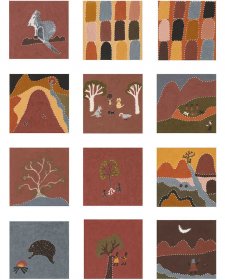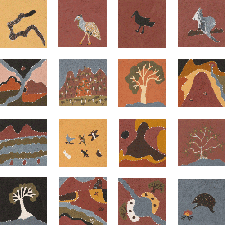Self-portraiture by its very nature is reflective, recalling memories and considering how experiences have shaped one’s values and sense of self. Self-reflection and the activity of retelling is employed by Purdie for the purpose of passing on Gija knowledge, culture and values.
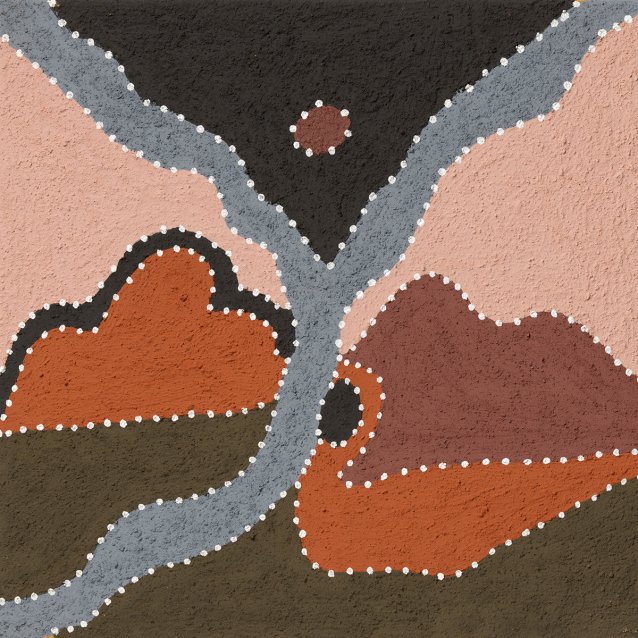
“That’s in Violet Valley when that Rainbow Serpent locked my aunty’s hand. Two little girls bin run back and tell ‘em two old man that water bin rising up, that Rainbow Serpent bin lock ‘em (my aunty’s hand) and he bin nearly drowned. That two old man, they bin come and do blessing near la water, and they kill that Rainbow Serpent.”
Shirley’s mother, Madigan Thomas, and aunty, Old Bayallal (Judy), told her this story when she was young. Bayallal used to get little perch fish when she was younger, with the other girls. One day, she went to Violet Valley River (grey area) and stuck her hands in the water to catch the perch. Her hand got stuck in a rock (black circle) and some other young girls went to tell their elders. The two men came and did a ritual, somewhat like a mantha (welcome blessing ceremony): they smeared the leaves of the nearby river gum with their sweat and other bodily products (like dead skin), then introduced the leaves into the water to kill the Rainbow Serpent. They saw blood shooting out of the water, and the snake went off upstream, and wanted to come out of the water; it left a hole over there in that spot (brown circle).
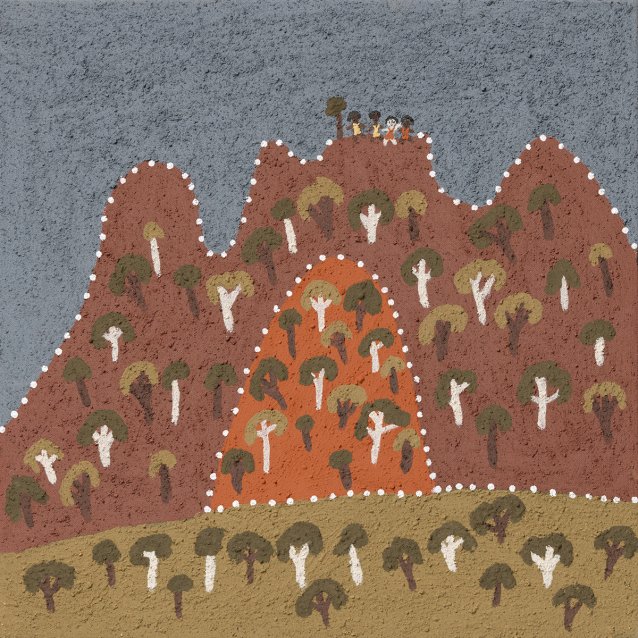
“This my dad’s mother. They bin say how she bin passed away, and they bin put him (her) la that tree to find out more how she bin passed away. They bin pull him (her) down from this tree and take him la cave and put him (her) away.”
This is the burial site of Shirley’s paternal grandmother. When she passed away, the elders took her body and wrapped it up in Mendammbirri (paperbark) and put it up in a tree in Mabel Downs, near the river, following Gija traditional customs. As she wasn’t very old, the family wanted to find out more about how she passed away. After they did find out the possible cause of her death, they buried her in a cave nearby, in the hills of Mabel Downs.
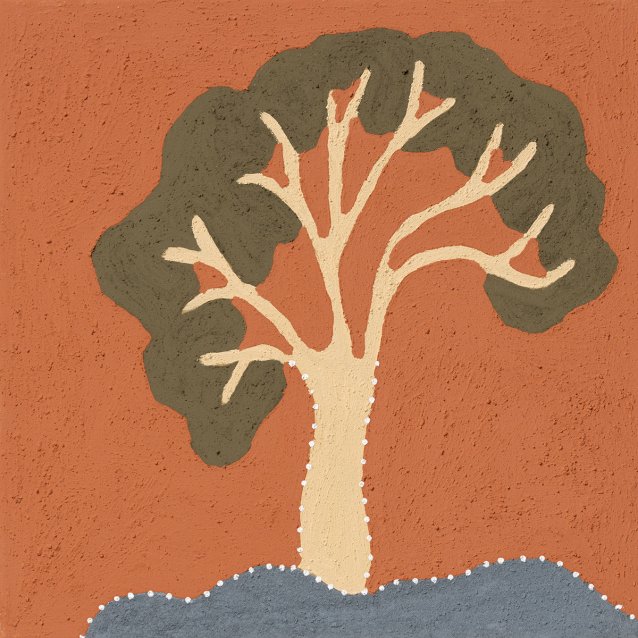
“When the full moon come out, that means he climbing up this Leichardt tree when he’s a bit dull. That’s the story because when old people always been telling us. For this tree, he’s a girl tree this one, that’s why they call it Ngimillil. Some trees are boys and some are girls.”
The old people passed this story down to Shirley. When there is a dull full moon, it is believed that the moon climbed up the Leichardt tree, and that is how its bark got its colour – which is not a bright white, but a dull white.

“This (dotted circle in bottom right) is my grandmother, another one – not my own one.
This is my aunty. This (circle in the top right) is where my grandmother, when she bin eat that snake, she bin sick. That snake was my father, and it made my grandmother sick, and they bin tell her, ‘you gonna have ‘em baby’.”
This story is about different sites that Shirley’s relatives occupy or relate stories to. Old Bayallal’s mother (her aunty’s mum) is buried in a cave located on a hill in Mabel Downs. Not far from Bayallal’s mother is another old aunty – Shirley’s father’s cousinsister (In Gija custom, two sisters may be called a mother to each other’s offspring). The top site features Jilloorlban Spring, leading to Mabel Downs River. It is the site where Shirley’s grandmother discovered she was pregnant. She had been feeling very ill, and was vomiting after eating a snake. Later on, the elder women told her she was going to have a baby. That snake she had eaten symbolised Shirley’s father’s conception.
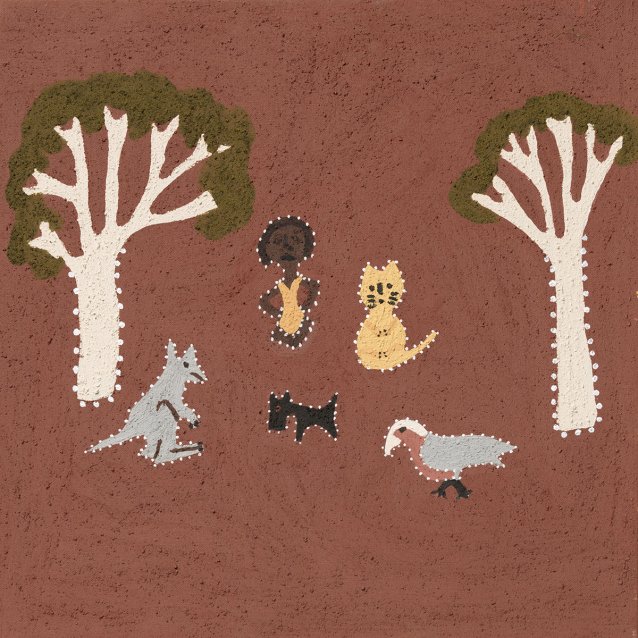
“This was when I was a little girl, and my mum bin working la station doing housework, I would sit a long way from the house, across the creek, near two trees and play with my mates. I had one pussycat, one galah, one little black dog and a kangaroo (joey). Because I am the eldest for the mum and my dad and I didn’t have no brother or sister at that time, when I was a little girl, so I had these mates instead. One time one walgaman (old woman) came along and she had a lot of dogs and they killed my cat. And I used to go up la station house to get some milk and one day the station owner asked me ‘where’s your cat’ and I bin told him that the dogs killed him. So the station manager went out with his gun and shoot all them dogs from that walgaman.”

“We used to play around Mabel Downs Station, play around la camp and the big hills. And we always see this police tracker, this Aboriginal bloke, he used to come down with the policeman. And we used to ask him, ‘What you come here for, to kill all the dog?’ and that Police tracker would say ‘yeah’, and so we would run away with our dogs and hide in the hills. We bin frightened he might kill our dogs.”
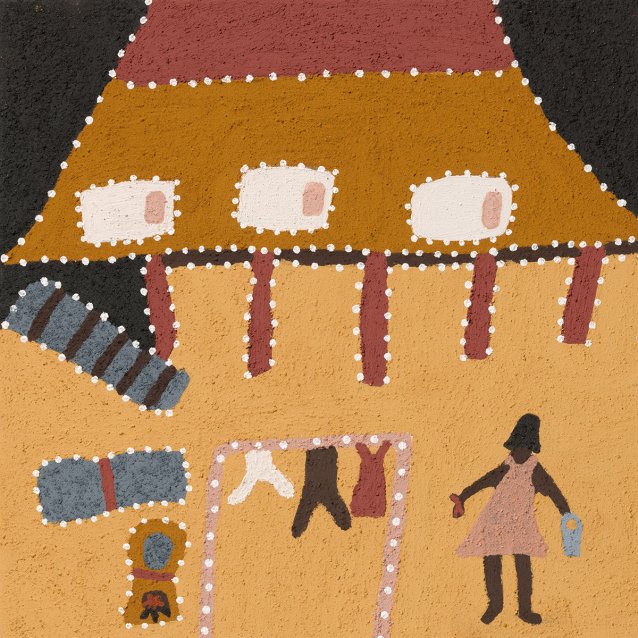
“This is about when I was young and I bin start learning for work. This story when I bin learn to work on Mabel Downs Station. This one when I bin start washing clothes; this one when I used to go for nanny goat to milk ‘em milk; that one I bin learn to make bed for gardiya.”
When Shirley was around 15 years of age, she recalls being taught to work as a maid on Mabel Downs Station. She had to wake up very early before sunrise, and commit to arduous labour involving polishing the floors; washing clothes by boiling them and ironing them; making the whitefella’s beds; and collecting fresh milk by milking the nanny goats on the station. She would work right through until the end of dinner time, washing up the dishes when the station owners finished their meals, and retiring after long work days that lasted around 12 hours.

“This is my story for when I was a teenager growing up. There is my mother (third right, top row); grandmother (middle top); me (top left); my aunty, dad’s sister (bottom right); my other aunty, mum’s cousin-sister (bottom middle); and my grand-aunt, my dad’s mother-sister. In Gija I would say, Goorrall (mother), Ganggal (grandmother), Gawangil (dad’s sister), Gamelayin (my mum’s cousin from her maternal side), and my Ngawuji (dad’s mother’s sister). They were teaching me about lessons when I was growing, like law and what’s right and wrong. I would listen to them.”
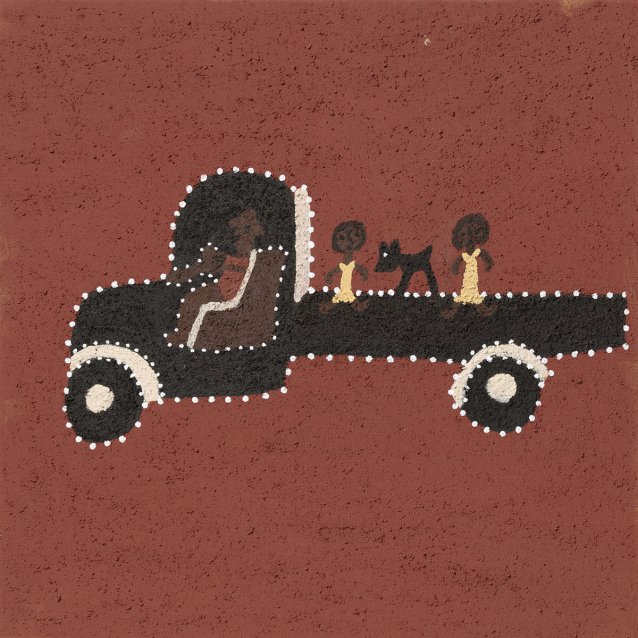
“This story was when I was a little girl with my mate. We were going back to Mabel Downs for getting some beef – from where they used to fence at Six Mile Bore. We was going back to get some meat, and my uncle was driving his truck. Me and Mary and the old man’s dog was sitting on the back of the truck, and we wanted to go toilet but we didn’t knock to him because we were cheeky, so we bin throw that dog off the truck to show him, and he saw us on the side mirror. He stopped the truck and tell us to walk from there – he left us there to walk home. It was a far walk, good enough long distance. We cried all the way.”
All images © Shirley Purdie/Copyright Agency, 2020




